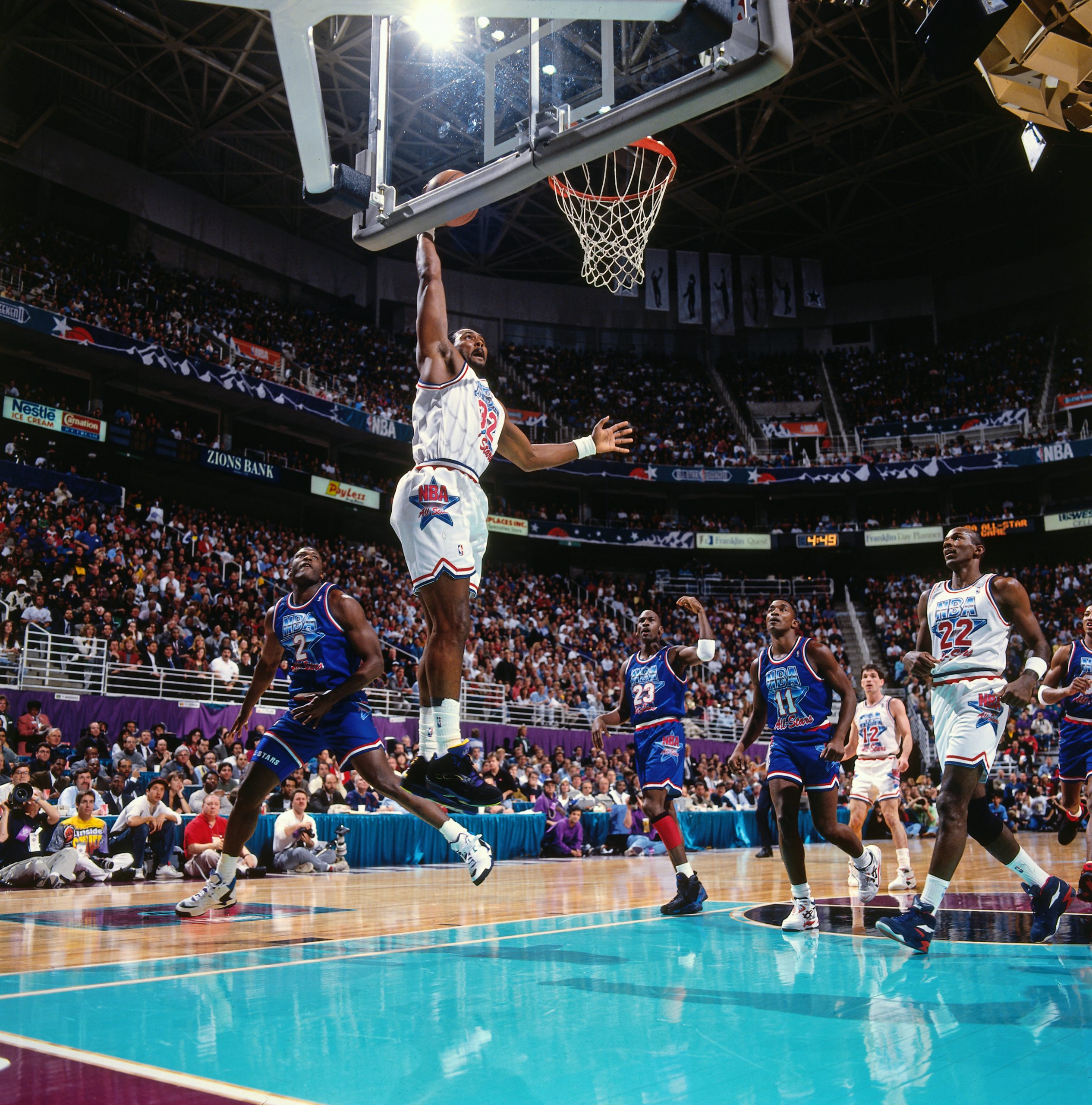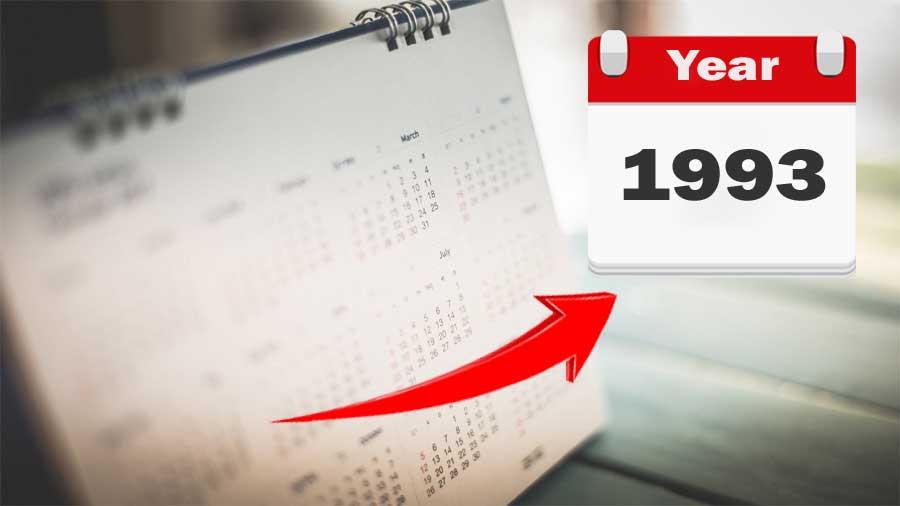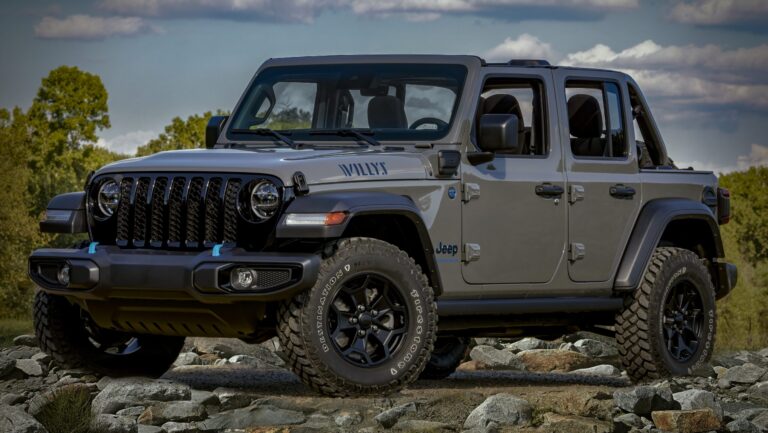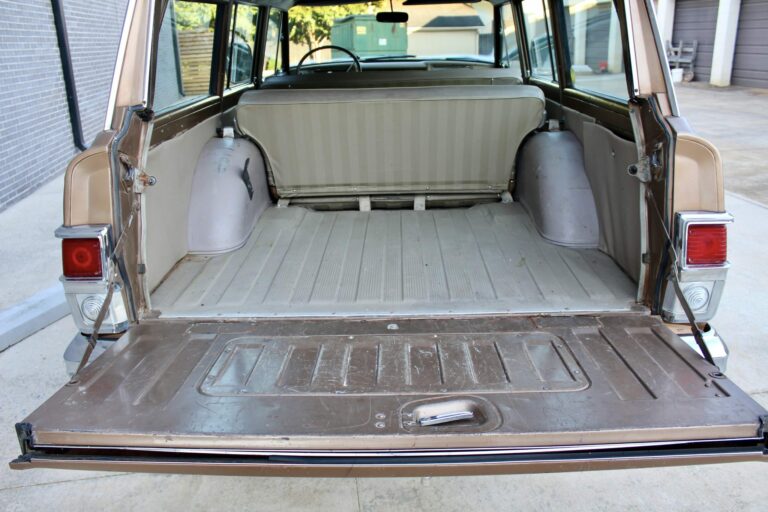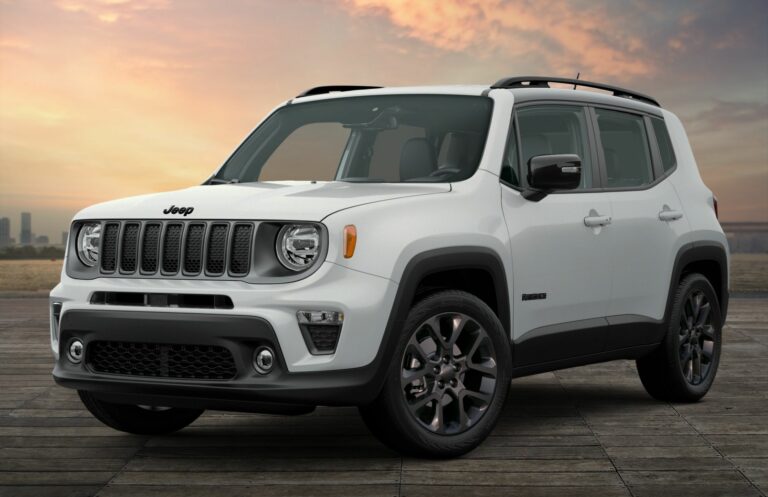1993 Jeep Grand Cherokee Lift Kit: Elevating Your ZJ’s Potential
1993 Jeep Grand Cherokee Lift Kit: Elevating Your ZJ’s Potential jeeps.truckstrend.com
The 1993 Jeep Grand Cherokee, affectionately known by its chassis code "ZJ," holds a special place in the hearts of off-road enthusiasts and SUV aficionados alike. Marking a significant evolution for Jeep, the ZJ combined rugged capability with a newfound level of comfort and refinement. However, for those looking to truly unleash its off-road prowess or simply achieve a more aggressive stance, a 1993 Jeep Grand Cherokee Lift Kit is an essential upgrade. This comprehensive guide will delve into everything you need to know about lifting your ZJ, from the benefits and components to installation considerations and common challenges.
Why Lift a 1993 Jeep Grand Cherokee (ZJ)?
1993 Jeep Grand Cherokee Lift Kit: Elevating Your ZJ’s Potential
Lifting your 1993 Jeep Grand Cherokee isn’t just about aesthetics; it’s about unlocking a new realm of capability and utility. The primary motivations for installing a lift kit include:
- Increased Ground Clearance: This is paramount for off-roading, allowing your ZJ to clear obstacles like rocks, logs, and deep ruts without damaging critical undercarriage components.
- Accommodating Larger Tires: A lift kit is often a prerequisite for fitting larger, more aggressive off-road tires (e.g., 31-33 inches), which provide superior traction, flotation, and a larger contact patch on challenging terrains.
- Improved Approach, Departure, and Breakover Angles: Lifting the vehicle enhances these critical off-road metrics, making it easier to navigate steep inclines, declines, and cresting obstacles without scraping bumpers or the underbody.
- Enhanced Articulation: Many lift kits, particularly those with longer control arms, improve wheel travel and articulation, allowing the wheels to maintain contact with uneven terrain for better traction.
- Aggressive Aesthetics: There’s no denying the visual impact. A lifted ZJ with larger tires commands attention, projecting a more rugged and capable image.
- Better Visibility: A higher seating position can offer improved visibility of the road or trail ahead.

Understanding Lift Kit Components for the ZJ
A typical 1993 Jeep Grand Cherokee lift kit comprises several key components, each playing a vital role in achieving the desired lift and maintaining proper vehicle dynamics:
- Coil Springs: These are the primary components responsible for increasing ride height. Lift kits replace the factory springs with longer, often stiffer, versions.
- Shocks Absorbers: Longer shocks are necessary to accommodate the increased suspension travel provided by the new coil springs. They are typically tuned for the specific lift height and intended use (e.g., off-road performance, comfortable ride).
- Control Arms: For lifts above 2-3 inches, longer or adjustable control arms (upper and lower, front and rear) are often included. These correct the caster angle (important for steering stability) and ensure proper axle positioning. Long arm kits, for higher lifts, replace the short factory arms with significantly longer ones, improving articulation and ride quality.
- Track Bars: Both front and rear track bars are crucial for centering the axles beneath the vehicle. Lift kits typically include an adjustable track bar to ensure the axles remain properly aligned after lifting.
- Brake Line Extensions: With increased suspension travel, stock brake lines can become stretched or damaged. Longer, stainless steel braided brake lines are often included or recommended.
- Sway Bar Links: Extended sway bar links are needed to maintain proper sway bar geometry and function, preventing the sway bar from binding or contacting other components.
- Transfer Case Drop Kit or Slip Yoke Eliminator (SYE): For lifts typically 3 inches and above, the increased driveline angle can cause vibrations. A transfer case drop kit lowers the transfer case slightly to reduce the angle. A Slip Yoke Eliminator (SYE) kit, paired with a CV (constant velocity) driveshaft, is a more robust solution that eliminates the slip yoke at the transfer case and creates a smoother driveline angle, especially for higher lifts.

Types of Lift Kits for the 1993 ZJ
Lift kits for the 1993 ZJ vary significantly in complexity, cost, and the amount of lift they provide:
- Budget Boost / Spacer Lifts (1.5-2.5 inches): These are the most economical and straightforward. They involve polyurethane or steel spacers placed above or below the factory coil springs.
- Pros: Inexpensive, relatively easy to install, maintains factory ride quality, good for clearing slightly larger tires (e.g., 30-31 inches).
- Cons: Does not improve suspension travel or articulation, can put more stress on factory components.
- Coil Lifts (2-4.5 inches): These kits replace the factory coil springs and shocks with new, longer components. They often include adjustable track bars and extended sway bar links. For lifts above 3 inches, new control arms may be included or highly recommended.
- Pros: Significant improvement in ground clearance and tire fitment, better ride quality and off-road performance than spacer lifts, offers increased articulation.
- Cons: More expensive and complex to install than spacer lifts, may require additional components like a T-case drop or SYE.
- Long Arm Kits (4.5+ inches): Designed for serious off-road enthusiasts, these kits replace the factory short control arms with much longer ones, often relocating the mounting points on the frame.
- Pros: Superior articulation, better ride quality on and off-road (due to flatter control arm angles), allows for very large tires (33+ inches).
- Cons: Most expensive and complex to install, often requires welding and fabrication, necessitates an SYE and custom driveshaft.
Choosing the Right Lift Kit for Your 1993 ZJ
Selecting the ideal lift kit for your ZJ requires careful consideration of several factors:
- Intended Use:
- Daily Driver / Mild Off-roading: A 2-3 inch coil lift or even a budget boost might suffice.
- Weekend Warrior / Moderate Trails: A 3-4.5 inch coil lift with appropriate components (adjustable control arms, SYE) is ideal.
- Hardcore Rock Crawler / Expedition Vehicle: A 4.5+ inch long arm kit is the way to go for maximum articulation and tire clearance.
- Desired Tire Size: This is a major determinant of lift height.
- 2-inch lift: Up to 30-31 inches
- 3-4.5 inch lift: Up to 31-32 inches (some trimming may be needed for 32s)
- 5+ inch lift: 33 inches and larger (fender trimming and possibly re-gearing will be necessary)
- Budget: Lift kits range from a few hundred dollars to several thousand. Factor in the cost of installation, alignment, and potentially new tires and re-gearing.
- Mechanical Skill & Tools: While a budget boost can often be a DIY project for someone with basic mechanical skills, a complete coil lift or long arm kit might require professional installation or a well-equipped garage and advanced expertise.
- Future Upgrades: Plan for future modifications. If you anticipate larger tires or more aggressive off-roading down the line, invest in a kit that can be expanded upon.
Installation Guide Overview (What to Expect)
While a full step-by-step guide is beyond the scope of this article, here’s an overview of what to expect during a 1993 ZJ lift kit installation:
- Safety First: Always use jack stands, wheel chocks, and proper lifting equipment. Never work under a vehicle supported only by a jack.
- Tools: You’ll need a comprehensive set of sockets, wrenches, a torque wrench, pry bars, possibly a spring compressor (though many kits can be installed without one), and potentially a grinder or welder for long arm kits.
- Disassembly: This involves removing wheels, disconnecting brake lines, sway bar links, shocks, and unbolting the factory coil springs and control arms.
- Component Replacement: Install the new coil springs, shocks, control arms, track bars, and extended brake lines.
- Driveline Correction: If needed, install the transfer case drop or SYE.
- Reassembly: Reconnect all components, ensuring all bolts are torqued to manufacturer specifications.
- Post-Installation Checks: Double-check all connections, ensure no lines are pinched, and perform a preliminary visual inspection.
Important Note: Professional alignment is absolutely critical after any lift kit installation to ensure proper steering, tire wear, and vehicle handling.
Common Challenges and Solutions
Lifting a ZJ, especially higher lifts, can introduce a few common issues:
- Driveline Vibrations: Often occurs with lifts of 3 inches or more due to increased driveline angles.
- Solution: Install a transfer case drop kit (for mild vibrations) or, ideally, a Slip Yoke Eliminator (SYE) kit with a CV driveshaft (for higher lifts and smoother operation).
- Steering Issues: Misaligned axles or incorrect caster can lead to wandering steering, bump steer, or a "death wobble."
- Solution: Use an adjustable track bar to center the axle. Ensure adjustable control arms are set correctly for proper caster. A heavy-duty steering linkage upgrade might be beneficial. Professional alignment is crucial.
- Tire Rubbing: Larger tires might rub against fender flares, inner fender liners, or control arms.
- Solution: Minor trimming of fender flares or the pinch weld. Correct backspacing on new wheels or wheel spacers can help.
- Brake Line Length: Stock lines become too short with increased suspension travel.
- Solution: Install extended stainless steel braided brake lines (often included in quality kits).
- Sagging/Uneven Ride: Can occur if components are mismatched or springs are not rated correctly for vehicle weight (e.g., heavy bumpers, winches).
- Solution: Choose springs rated for your vehicle’s loaded weight. Consider progressive rate springs.
Post-Lift Considerations
After installing your lift kit, remember these crucial steps:
- Professional Alignment: This is non-negotiable. Find an alignment shop familiar with lifted vehicles.
- Tire and Wheel Upgrade: You’ll likely want to capitalize on the new clearance with larger tires. Consider appropriate wheel backspacing.
- Re-gearing: If installing significantly larger tires (e.g., 33 inches or more), consider re-gearing your axles. Larger tires effectively raise your final drive ratio, reducing power and fuel economy. Re-gearing restores performance and reduces strain on the drivetrain.
- Regular Maintenance: Periodically check all bolts for proper torque, inspect bushings for wear, and ensure all components are functioning correctly.
Price Table: 1993 Jeep Grand Cherokee Lift Kits
Prices can vary significantly based on brand, quality, components included, and where purchased. This table provides a general range for common lift types.
| Lift Kit Type | Lift Height Range (Inches) | Key Components Included | Estimated Price Range (USD) | Best For |
|---|---|---|---|---|
| Budget Boost / Spacer | 1.5 – 2.5 | Spacers (coil or pucks), sometimes extended shock mounts | $100 – $350 | Aesthetics, mild trails, budget-conscious |
| Basic Coil Lift | 2 – 3 | New coil springs, longer shocks, extended sway bar links | $400 – $800 | Daily driver, light to moderate off-roading |
| Complete Coil Lift | 3 – 4.5 | New coil springs, shocks, adjustable track bar, control arms, extended brake lines, T-case drop (optional) | $800 – $1,800 | Moderate to serious off-roading, larger tires |
| Long Arm Kit | 4.5 – 6.5+ | New coil springs, shocks, long control arms, adjustable track bars, extended brake lines, SYE (required), custom driveshaft | $2,000 – $5,000+ | Hardcore off-roading, maximum articulation, largest tires |
Note: These prices are for the kit only and do not include installation costs, new tires, wheels, re-gearing, or additional upgrades like steering components.
Frequently Asked Questions (FAQ)
Q1: How much lift can I put on my 1993 ZJ?
A1: While lifts up to 6.5 inches or more are possible, 3-4.5 inches is generally considered the sweet spot for a balance of off-road capability and on-road manners. Lifts over 4.5 inches typically require significant additional modifications like long arm kits, SYE, and custom driveshafts.
Q2: Do I need a Slip Yoke Eliminator (SYE) for my ZJ?
A2: For lifts of 3 inches and above, an SYE is highly recommended to prevent driveline vibrations and improve the longevity of your transfer case and driveshaft. For lifts below 3 inches, a transfer case drop might suffice if vibrations occur.
Q3: Will I need new tires after lifting my ZJ?
A3: Most likely, yes. The primary reason for lifting is often to fit larger tires. A 2-inch lift can usually clear 30-31 inch tires, while 3-4.5 inch lifts allow for 31-32 inch tires. For 33-inch tires or larger, a 5+ inch lift is typically required, often with fender trimming.
Q4: Will lifting my ZJ affect its ride quality?
A4: Yes, it can. Spacer lifts often retain the factory ride. Quality coil lifts with properly tuned shocks can actually improve ride quality over rough terrain, but stiffer springs might make the ride firmer on pavement. Long arm kits generally offer the best ride quality for higher lifts due to better control arm geometry.
Q5: Is it hard to install a lift kit on a 1993 ZJ?
A5: It depends on the type of kit. A budget boost can be a moderate DIY project. A complete coil lift is more involved and might be challenging for beginners. Long arm kits often require welding and extensive mechanical knowledge, making professional installation highly recommended.
Q6: Do I need to re-gear my axles after lifting and adding larger tires?
A6: For tire sizes 32 inches and larger, re-gearing is strongly recommended. Larger tires effectively change your final drive ratio, leading to reduced acceleration, increased strain on the transmission, and poorer fuel economy. Re-gearing restores power and efficiency.
Conclusion
The 1993 Jeep Grand Cherokee is a highly capable and adaptable platform, and a well-chosen lift kit can truly transform its performance and appearance. Whether you’re aiming for a subtle improvement in ground clearance, the ability to conquer challenging trails, or simply a more commanding presence on the road, investing in a quality lift kit is a rewarding endeavor. By understanding the components, types, and considerations involved, you can confidently select the perfect lift kit to elevate your ZJ’s potential and embark on new adventures with enhanced capability and style. Remember to prioritize safety during installation and seek professional assistance for alignment and complex modifications to ensure your lifted ZJ performs optimally for years to come.
